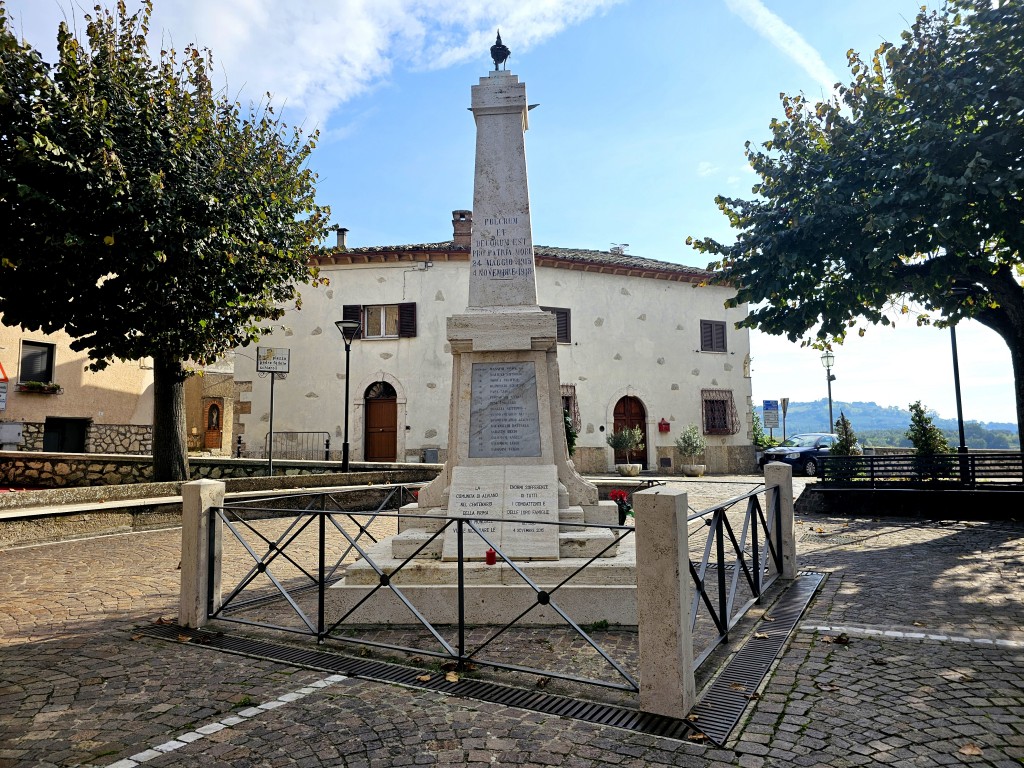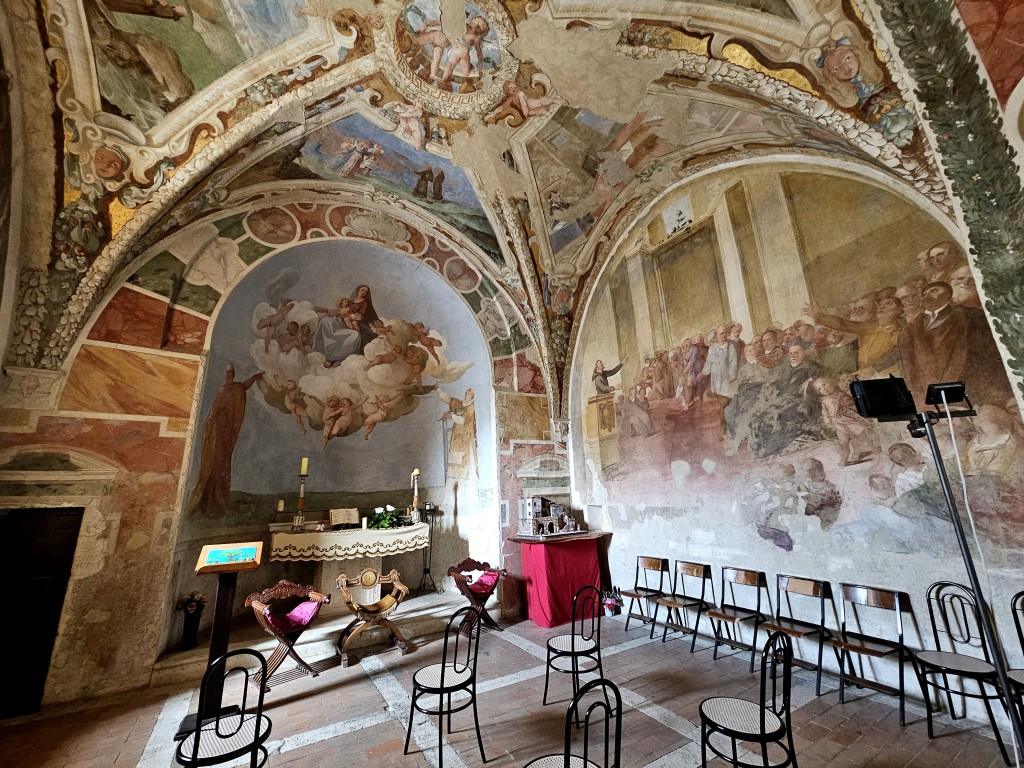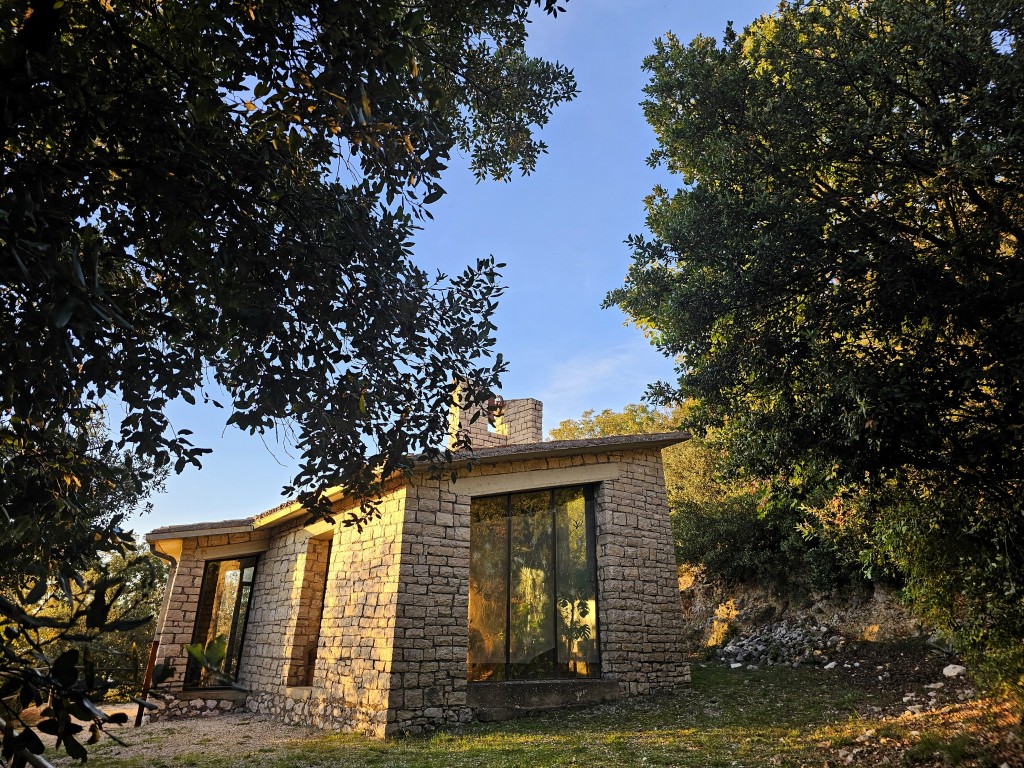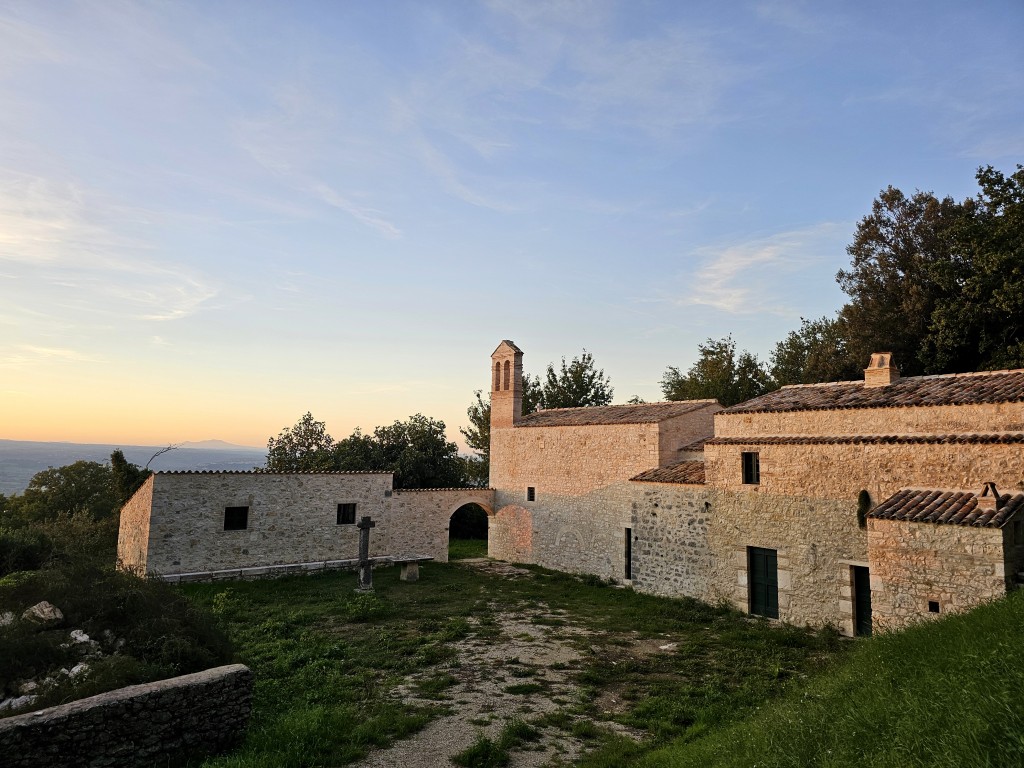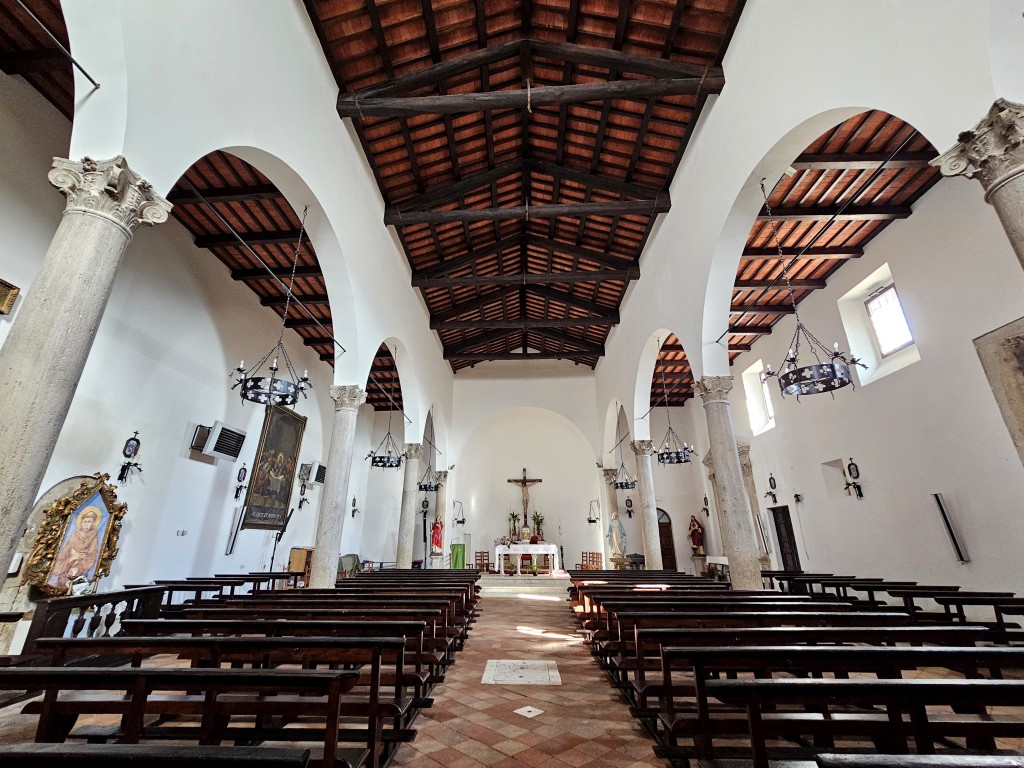Art and culture
Monuments and churches
Alviano War Memorial
Inside a square enclosure (2×2) stands a marble column at the top of which is positioned a bronze eagle. At the base of the column rests a large open book in white marble. The monument commemorates the fallen of Alviano during both the First and Second World Wars. Date of location: 09/07/1922
Chapel of San Francesco
On the first floor of the castle of Alviano there is the chapel of San Francesco with a series of frescoes of the seventeenth century, of good workmanship, which can be considered as a sort of visual memory of the history of Alviano. The chapel depicts the miracle of St. Francis and the swallows, which took place in 1212 in Alviano "... one can preach by first commanding the swallows who sang to keep silent..." (Fioretti), and the Miracle of the Geese and the Wolf that occurred in the same year in Lugnano in Teverina. The face of Donna Olimpia, the commissioner of those frescoes, also seems to be present.
Chapel of the Swallows
The "Chapel of the Swallows" was built in the most panoramic point of the territory of the municipality of Alviano, with a viewpoint over the Teverina plain and the Alviano-Guardea naturalistic oasis in memory of a miraculous event concerning the figure of St. Francis who in his apostolic action around the years 1210-1213, passed to Alviano to announce the divine word. The initial idea was Father Luciano Canonici (parish priest of Alviano at that time) who did not miss the 750th anniversary of the death of St. Francis in 1976, and to commemorate the event organized the construction of a chapel that commemorated the Miracle of the Swallows. Father Canonici involved in addition to the population of Alviano, also his friend friar Guglielmo Schiavina, architect and sculptor who, after having studied Umbrian architecture for a while, proposed a sketch of the current chapel that was reworked together with the engineer Claudio Schiaroli, who also took care of the execution of the project. The account given by primitive biographers tells that one day while Francis was preaching in the square of Alviano, many swallows came with great noise and disturbed. The Saint invited them to be silent and the swallows obeyed. It is also said that those present struck by the miracle, amazed, said: "Truly this man is a saint!". Some insistently asked to be able to follow him, but they could not because they were tied by family commitments. The Poverello said to them: "Don't be in a hurry! I will think what you must do for the salvation of your souls!" And it seems that in front of the masses who wanted to follow him, he thought of a specific Rule of the Third Order "for the universal health of all". The construction is divided into two fairly irregular bodies slightly staggered both in height and depth, used, as the appearance suggests, for two different functions: one, the smallest, is a chapel proper, also containing the altar and illuminated by a large window that recalls the idea of the Miracle of the Swallows; the other semi-open is used for people who can therefore attend the rite while remaining in contact with the completely natural environment that surrounds the chapel.
A curiosity: behind the main window with the work in metal profile with St. Francis and the swallows, 4-5 shots were fired with a 9-gauge pistol to give the spider's web effect, since it was the period of massacres and terrorism in Italy, Father Guglielmo Schiavina wanted to add this contrasting effect with the Franciscan message of peace. Unfortunately today, by vandals, the web drawn by the blows has extended and, in addition, the other windows have also been hit.
The sculptures that enrich the outdoor space are faithful copies made of fiberglass of works commissioned to Father Guglielmo Schiavina and now exhibited in various countries around the world. For example, the Annunciation on the side of the chapel is a copy of the original in front of the basilica in Nazareth.
Hermitage of Sant'Illuminata
Along the provincial road that connects Alviano to Guardea is the Camaldolese Hermitage of Santa Illuminata. Founded by St. Romuald in 1007, the convent developed in the thirteenth century, after St. Francis had already arrived on the site, of whose visit remains a small cave with a stone bed in which he used to rest and retire in prayer. Today the travertine slab is very smooth because over the centuries all the sick pilgrims lay there waiting for healing, while ancient sources also document the presence of a miraculous spring nearby, which today is hidden by vegetation. Some Blesseds, such as Blessed Pascuccio of the noble family of the Atti di Todi, lived in Santa Illuminata and many members of the most important and wealthy families of Baschi, Alviano and Guardea were buried here.
Santa Maria Assunta in Cielo church
The Parish Church of Santa Maria Assunta is located within the village and is the main religious building; there is no certain information about its origin, the first mention is found in a document of 1275 where it is evident the existence of a church of S. Maria di Alviano with a college of canons (therefore a Collegiate). The church was enlarged and renovated in Renaissance style at the beginning of the 1500s, probably based on a design by Bartolomeo di Alviano who set up a basilica building with three naves. The building is linked to the Alviano lordship who financed the expansion and embellishment works, in 1516 Pantasilea Baglioni, second wife of Bartolomeo d'Alviano, commissioned the precious fresco of the Madonna with Saints executed by Giovanni Antonio de' Sacchis, known as Pordenone in the second altar from the right aisle where the same noblewoman appears. The façade is characterized by a plastered surface in the center of which there is a quadrangular portal adorned with a worked travertine exhibition and surmounted by a broken tympanum; the architrave bears the date 1506, the year in which the renovation of the building was carried out by Bartolomeo Attilio Liviani and the dedication of the building to St. Peter and Paul. At the top there is a small oculus with a frame worked in travertine. The church is flanked on the left side by a bell tower in masonry with a quadrangular base, at the top is the belfry with a single arched opening. The internal flooring consists of square terracotta tiles placed at 45 degrees. In the center of the presbytery there is a table altar supported by stone columns and arches. Entering on the right, after a confessional there is a statue of the Madonna enthroned with angels and on the wall a fresco within an oval dated 1551 with a Madonna and Child enthroned offering the rosary to the faithful gathered at her feet. The presbytery is raised by one step and houses the high altar decorated with a Crucifix on the wall. Descending on the left wall a second altar with a niche containing the statue of Santa Rita and in the next bay a canvas with the Last Supper. This is followed by a stone niche with a statue of St. Francis and a canvas with the Madonna enthroned between St. Charles Borromeo and another Franciscan saint. On the counter-façade is the stone baptismal font with a finely decorated wooden roof with the statue of St. John the Baptist at the top.
News
2024, November 12
A new pictorial cycle has been discovered inside the castle of Bartolomeo di Alviano and Donna Olimpia Pamphilj. The municipal administration made the announcement, referring to the discovery of the restorer Simone Deturres, who the Municipality has given the task of working on the frescoes, which could tell something new about the palace that belonged to the captain of fortune. Following surveys completed last December, new figures have emerged that shed further light on the pictorial works contained in the precious building of Alviano, whose frescoes have been among the major tourist attractions for years for those who come to visit the castle.
“Following maintenance work on the current library, we saw traces of what we thought was a fresco appear on a wall,” reports Mayor Giovanni Ciardo. “Given the value and expressive power of the other frescoes in the other rooms of the Castle,” he explains, “we thought it was right to go and investigate.” Consequently, the task was given to the cultural heritage restorer Simone Deturres who says: "I thought I would discover little more than a coat of arms above a fireplace and instead there is a pictorial cycle, all to be recovered. I carried out nineteen surveys which confirmed the presence of an extensive pictorial apparatus, similar to that of the other rooms of the Castle".
Deturres speaks of "a rather serious situation due to the effect of many concomitant factors. I can assure you however that under the plaster there is at least 60 percent of what were the original frescoes that can be recovered". The restorer adds: "we cannot yet know for what reasons they were covered, perhaps because they were damaged or because they depicted something embarrassing. Only by uncovering the scrolls and the entire fresco, as in the other rooms, will we understand more". The Castle currently has three frescoed rooms: the Unicorn Room, the Star Room and the Phoenix Room. In these frescoes, whose dating varies between 1518-1519 and 1537, symbols, Roman myths, and family crests intimately linked to the figure of Bartolomeo d’Alviano are intertwined.
Nadia Bagnarini, an art historian who edited a recent publication entitled “The castle of Alviano and its iconographic apparatus. The triumph of the Liviani dynasty”, states: “at first glance, the newly discovered frescoes are certainly part of a very complex cycle and require immediate restoration to preserve them, for the purpose of protection, enjoyment and enhancement. The figure of the bearded character (presumably a Triton), which resurfaced in one of the tests carried out, is very interesting, notable for its brushstrokes and anatomical rendering. Even more captivating is the refined image of the Nereid behind him, riding his tail. I have doubts about the painter's hand being the same as the one who painted the frescoes in the other rooms, but nothing can be ruled out, while we wait for the restoration to reveal the rest".The surveys are now complete.
Deturres' report calls for an in-depth restoration to recover the entire painted surface and hypothesizes a new passage connecting the rooms that has not yet been explored. "We are curious to discover what those plasters hide - continues Mayor Ciardo - the frescoes in the other rooms are the heart of the guided tours in the Castle and are very successful". The complex of frescoes in the Castle has also inspired a Mexican illustrator who has created a pictorial path called "Path of the Unicorn", near the village of Alviano. "Now we have to get to the bottom of it and discover what other stories are hidden behind those plasters, hoping that humidity, time, the hand of man, have not done too much damage.
Maybe we could discover other beautiful rooms like the Sala della Stella” the Mayor recalls. “This room – he adds – recalls the hope of a father, Bartolomeo di Alviano, to see “his star renewed”, his history, his greatness. “Of course, we are only at the beginning. A significant commitment is needed, both in terms of time and money. But now that we have begun to see so much beauty – Ciardo concludes – we will try all the ways to give this town one more reason to rediscover itself and be discovered”.

